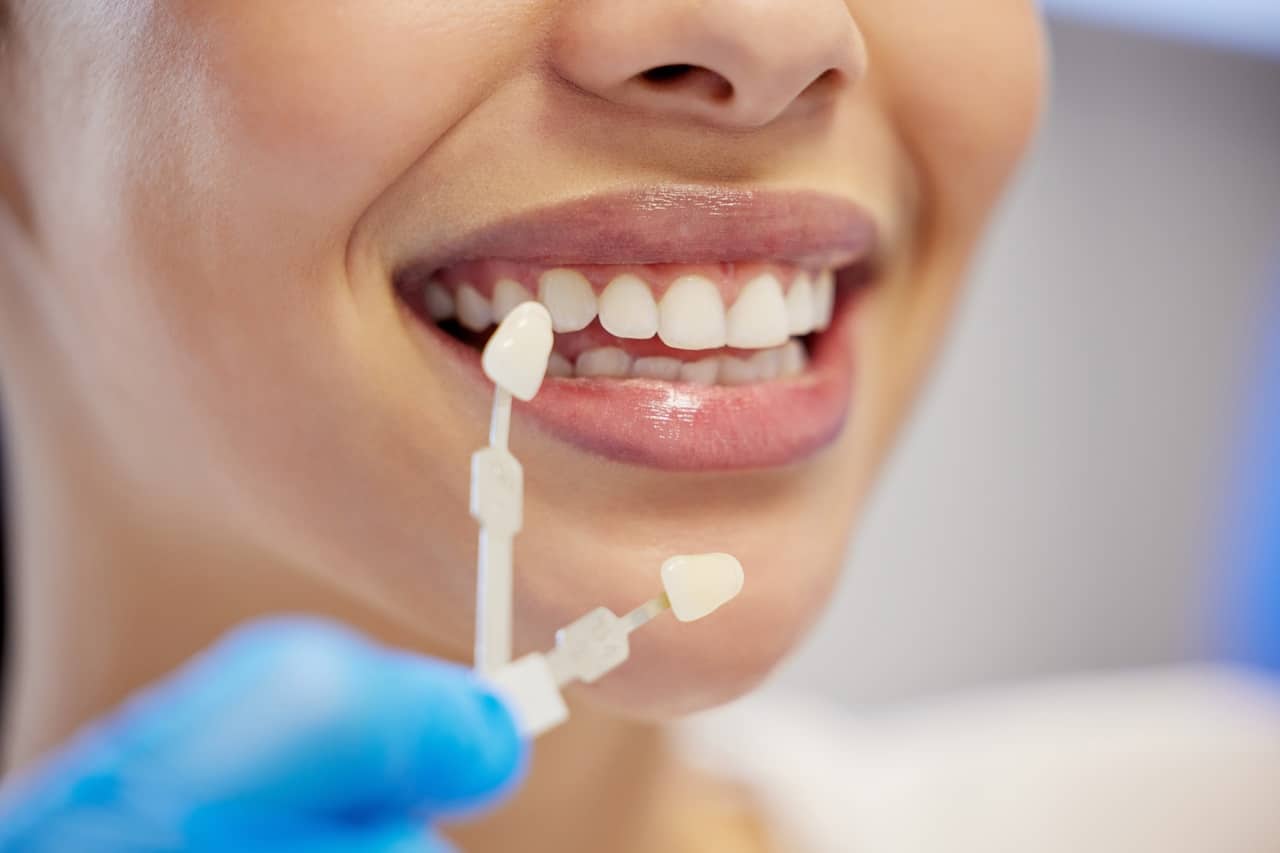Dental crowns remain a cornerstone of modern restorative dentistry, providing not only functional benefits but also enhancing the aesthetic appeal of smiles across all ages. As we move into 2024, understanding the role and relevance of dental crowns in maintaining dental health is crucial for anyone considering restorative dental treatments. In our dental practice, we are committed to educating our patients about each aspect of their dental care, including the pivotal role of dental crowns.
What exactly are dental crowns? Simply put, they are custom-fitted covers placed over teeth that are decayed, damaged, or cracked. Crowns help restore the tooth’s shape, size, and strength and improve its overall appearance. They are frequently recommended when a tooth has a large filling exceeding the natural tooth structure or after a root canal treatment when the tooth is frail and requires robust support and protection. Additionally, crowns can be used as part of a smile makeover due to their ability to enhance the aesthetic appearance of teeth.
The significance of dental crowns extends beyond just their functionality. They can profoundly impact the quality of life by improving chewing efficiency and offering comfort, alongside boosting confidence with a refreshed, more aligned smile. Each crown is tailored to match the colour and contour of your existing teeth, ensuring that it not only performs like a natural tooth but also fits seamlessly with the rest of your smile.
What Are Dental Crowns and Why Are They Used?
Dental crowns are custom-fitted tooth prosthetics that are used to cover damaged or decayed teeth. They are an effective solution that not only strengthens and protects the tooth but also improves its overall appearance. When teeth are cracked, weakened by decay, or have undergone significant wear and tear, crowns provide the necessary support to restore their structure and functionality. Additionally, crowns are utilized to complete other dental procedures, such as bridges, root canals, or dental implants, enhancing both the aesthetics and the bite of a person.
The decision to use a dental crown involves several factors. These include the extent of tooth decay, the structural damage to the tooth, and the dental goals of the patient. For instance, after a root canal, crowns are often essential as the tooth tends to become brittle and may need extra protection. Not only do crowns help maintain the dental health of an individual, but they also assist in achieving a smile that is visually appealing.
Types of Materials Used in Dental Crowns
The materials used for dental crowns vary, each offering unique benefits for different needs. The choice depends largely on the desired aesthetic result, the position of the tooth, and budget considerations:
1. Porcelain: Porcelain crowns are popular for their natural tooth-like appearance, matching the colour and texture of natural teeth. They are typically used for the front teeth.
2. Ceramic: Similar to porcelain, ceramic crowns provide a natural colour match and are also well-suited for people with metal allergies.
3. Gold Alloys: Comprising gold, copper, and other metals, these crowns are highly durable and provide a high level of strength. They are resistant to wear and tear and do not fracture or chip.
4. Metal Alloys: Aside from gold, other metals can be used, including chromium and nickel. These crowns are strong and withstand biting and chewing forces well, making them ideal for out-of-sight molars.
5. Porcelain Fused to Metal (PFM): Combining the strength of metal with the aesthetic appeal of porcelain, PFM crowns are a popular choice as they are both durable and attractive.
Each material has its specific advantages, and the choice often depends on the location of the crown in the mouth, the amount of natural tooth remaining, and individual patient preferences. Our team ensures that patients receive guidance in selecting the right type of crown to meet their functional needs and aesthetic desires.
Steps Involved in Getting a Dental Crown
The process of getting a dental crown typically involves several steps that ensure the best fitting and aesthetic results for our patients. Our team strives to make each step as comfortable and efficient as possible. Here’s what you can expect:
First, we’ll conduct a comprehensive examination of the affected tooth to determine the appropriateness of a dental crown. If a crown is needed, we prepare the tooth by reshaping it under local anesthesia to make room for the crown itself. This involves removing any decay and shaping the outer layers of the tooth to ensure a good fit.
Next, an impression of the reshaped tooth and surrounding teeth is taken. This model helps ensure that the crown will match your other teeth in fit and bite alignment. The impression is sent to a dental lab where your crown is custom-made to match the colour and shape of your natural teeth. While your permanent crown is being made, we place a temporary crown to protect the tooth and maintain the aesthetic of your smile.
Caring for Your Dental Crowns: Best Practices
Once your dental crown is placed, taking proper care of it is crucial for ensuring its longevity. Here are some best practices:
Regular cleaning is essential. Just like your natural teeth, crowns need to be cleaned daily. Brushing twice a day and flossing around the crown to remove plaque are crucial steps. Pay special attention to the area where the gum meets the tooth, as plaque tends to accumulate here. Additionally, avoid using hard toothbrushes or abrasive toothpaste that could damage the crown.
Moreover, although crowns are durable, they are not indestructible. Avoid chewing hard foods, ice, or other hard objects that could crack the crown. If you have a habit of grinding or clenching your teeth, let us know. We might recommend wearing a night guard to protect your crowns while you sleep.
Conclusion
Maintaining optimal oral health involves understanding all your options and knowing how best to care for your dental treatments. Dental crowns offer a fantastic way to restore functionality and aesthetics to your teeth, significantly enhancing your smile and confidence. At our practice, we are dedicated to providing detailed information and care, ensuring you are comfortable and informed throughout the treatment process. Whether you’re considering a crown for restoration or cosmetic purposes, we’re here to help every step of the way.
If you’re looking to explore dental crowns as a solution for yourself or a family member or just need more information about our dental services in Pickering, do not hesitate to contact our team at Pickering Dental Services. Let us guide you towards achieving and maintaining a brilliant, healthy smile.


